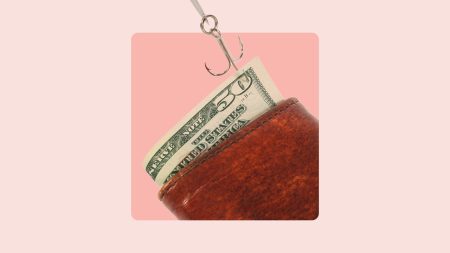Key takeaways
- Carrying a credit card balance, even during a 0 percent intro APR period, can have consequences such as accruing interest on non-qualifying amounts and potentially losing the offer.
- Understand the terms and limitations of a 0 percent APR offer, as some may only apply to balance transfers or purchases.
- Carrying a balance can negatively impact your credit score by increasing your credit utilization ratio.
- It is important to have a plan for paying off any balance before the end of the 0 percent intro APR period and to make at least the minimum monthly payments on time.
If you open a credit card with an introductory 0 percent APR, it may seem like there’s no downside to carrying a balance. The beauty of 0 percent offers is that they allow you to carry a balance for a time without expensive interest charges racking up. However, carrying a balance long-term — even on a 0 percent interest offer card — can lead to problems.
Carrying a credit card balance, even one that isn’t accruing interest at the moment, means that you’re allowing the debt you owe to go unpaid. Eventually, your introductory 0 percent interest period will end, and whatever debt you still have will begin collecting interest. Furthermore, if you’re carrying a balance because you’re failing to make your minimum monthly payments, there are other consequences to consider — including the possible termination of your interest-free offer period.
Here are some situations where you may want to carry a balance on your 0 percent interest card and some potential downsides to not paying it off quickly.
Why carry a balance during your intro APR period?
While carrying a balance can be a bad idea, there are some circumstances in which it might be a good choice for you.
You’re transferring a balance from a high-interest card
Let’s say you’re already struggling to pay off a large balance on a credit card with a high interest rate. If you leave the balance on that card, you’ll end up paying a considerable amount of interest over time. Transferring the amount to a balance transfer card with a 0 percent intro APR can allow you to pay some of your balance off each month without incurring more interest.
In this case, carrying a balance on your 0 percent APR card as you pay it down gradually is a great way to save money on interest. Just make sure you have a plan to pay down all or most of your balance before your intro APR period ends. Once it does, you’ll start paying the regular APR on the remaining amount.
You need to make a large purchase you can’t pay off immediately
You might need to use your card to pay for a big-ticket item you need right away — like transmission repairs on your car. Charging this to a new 0 percent APR card allows you to pay it off monthly without racking up interest. Carrying a balance on something you need time to pay for is a good use of a 0 percent intro APR offer, but this should be used for emergencies only.
If the purchase is something that isn’t absolutely necessary now, it’s better to save up for it instead of putting it on a credit card — even one with a zero-interest offer.
You want to take advantage of other balance transfer card incentives
Some credit cards offer additional benefits that can help you manage your balance. For example, the Chase Slate Edge℠* has a 0 percent intro APR for 18 months on both purchases and balance transfers (20.49 percent to 29.24 percent variable APR thereafter). The card also offers a 2 percent APR reduction if you spend $1,000 by your next account anniversary and make on-time payments.
Paying on time and spending $500 in your first 6 months can also get you an automatic, one-time review for a higher credit limit.
With that said, the Slate Edge is primarily a 0 percent APR card, so it makes sense you might carry a balance while also taking advantage of the additional offers.
Potential downsides of carrying a balance
Now that we’ve covered why it can make sense to carry a balance, let’s weigh those reasons against the potential downsides.
You must make minimum payments (and pay on time)
A 0 percent introductory APR doesn’t mean you should leave a balance on your card until the promotional period is up. For one thing, that isn’t a great way to maximize the interest-free period.
Furthermore, you’re still required to make the minimum payments each billing cycle, even during an interest-free promo period. Some cards may end your promotional period and charge a penalty APR if a minimum payment is overdue.
Some intro APR offers only apply to purchases or balance transfers — not both
Pay close attention to what kind of intro APR offer you have. While intro APR cards like the BankAmericard® credit card* and Chase Freedom Unlimited® offer promotional periods for both balance transfers and purchases, other cards offer intro APR periods that only apply to one or the other.
For instance, the Citi Double Cash® Card allows you to transfer a balance and pay a 0 percent intro APR for 18 months (18.49% – 28.49% variable APR thereafter, transfers must be made within the first 4 months). It doesn’t come with an intro APR for purchases, however, so any new charges to your card will accrue interest. If your card has an intro APR period exclusively for purchases or balance transfers, it’s best to use it only for that purpose until your balance is paid off in full.
You might lose your grace period
Your grace period is the window of time between making a purchase and your payment due date. During this time, most cards won’t charge you interest — but only if you haven’t been carrying a balance from month to month. So if you’re making purchases on a card that offers a 0 percent APR on balance transfers but not purchases, you’re technically carrying a balance — which means your purchases likely won’t enjoy a grace period.
To avoid paying interest on purchases, you must pay off your statement balance by the due date — including any balances you transferred to the card. Again, this is why it’s best to use a balance transfer card only for your balance transfer until it’s fully paid off.
How carrying a balance affects your credit
You may have heard carrying a balance is a good way to build credit. This is simply a myth. Credit card companies report balances in one of two ways:
- Your most recent statement balance
- Your current balance on the day of the month when issuers report to the bureaus
You can check with your card issuer to discover which reporting pattern it follows. In either case, whether you pay the entire statement amount or carry some over to the following statement, it doesn’t change the number reported for that month.
Importantly, a FICO score doesn’t consider whether you’re carrying a balance, so carrying a balance doesn’t help your credit at all. In fact, it can actually bring your score down. That’s because leaving a balance on your card increases your credit utilization ratio, which is the amount you owe on revolving accounts (like credit cards) compared to your credit limit. A good rule of thumb is to borrow at most 30 percent of your limit because a higher utilization ratio can hurt your score.
In addition to pushing up your credit utilization ratio, carrying any balance that isn’t covered by a promotional 0 percent APR leads to interest charges — meaning you ultimately pay more for the things you buy. Allowing interest to pile up could make it harder to keep up with your payments and might increase the chance that you aren’t able to make your minimum payment on time. Additionally, missing a payment or paying late can bring down your credit score.
How to pay off your balance during your intro APR period
Paying off your entire statement balance every month is easier to do if you create a budget before using your card. Try to charge purchases to your card only when you have enough room in your budget to pay them off in full.
Your credit card company must issue your billing statement at least 21 days before your due date. When you get your statement, read it right away. Check the date your payment is due and decide how you’ll make your payment. You may choose to pay through the credit card issuer’s mobile app or website, by phone or by mailing in a check.
Making your payment immediately can help ensure that you don’t miss the due date and incur late fees or penalty APRs. If you need to wait to make a payment, it may be helpful to set up a reminder email or a notification on your phone letting you know when the due date approaches.
Keep in mind that, if you were carrying a balance up until this point, you might continue to be charged interest from the date of your statement until the credit card company gets your payment. This is called residual interest. If your cardholder agreement says that residual interest applies, you’re better off making your payment as soon as possible to minimize the amount of interest you have to pay.
Consider setting up autopay to streamline paying your bill. As the name implies, autopay automatically transfers money each month from your bank account to your credit card issuer. You’ll still want to keep an eye on your credit card balance to ensure the funds in your bank account are sufficient to cover it.
Should you pay more than the 0 percent APR minimum payment?
If you can afford to pay more than your minimum payment, do so. This can help pay off your balance more quickly and — hopefully — allow you to pay your balance off in full before the end of the introductory period.
For example, if you owe $3,000 on a card with an introductory 0 percent APR for the first 21 months, your monthly minimum payment may be roughly $25-$35 a month. However, paying only the minimum payment each month means you won’t pay off your balance before the promotional period expires. Instead, you should try to pay about $143 a month ($3,000/21=$142.857) in order to pay off your balance before it begins to accrue interest.
What to do if you’ve overspent
It’s never ideal to find yourself with a larger balance than you can handle at the end of a 0 percent intro APR period. The answer to this quandary is to pay your balance down as much as possible before the regular APR kicks in. That way, you’ll minimize the interest you get charged. If you can pause payments elsewhere or generate extra income to get your balance closer to $0, do it.
You could also transfer your balance to another credit card with a 0 percent intro APR period. This can be a slippery slope, though. You don’t want to end up in a similar (or worse) situation in a few months. If you choose this route, make sure you have a plan to eliminate your debt within the new card’s 0 percent APR period. Divide your balance by the number of months in your new intro APR period, and commit to making at least that payment each month.
For example, if you transfer $2,000 of debt to a credit card with a 15-month 0 percent intro APR period, commit to paying at least $134 each month for the next 15 months ($2,000/15=$133.33) while avoiding new charges.
Also, be aware that if the card you’re transferring your balance to charges a balance transfer fee, that will be added to your balance too.
The bottom line
There are good reasons to carry a balance during a 0 percent APR period, such as if you’re paying down a balance from another card and you have a plan for eliminating that debt before the promo period ends. But carrying a balance during a 0 percent APR period without a plan to pay it down can lead to unexpected interest charges or fees — especially if you don’t read the fine print and monitor your card use closely.
Keeping a balance on your card from one month to the next could also increase your credit utilization ratio and negatively impact your credit score. So, in general, the sooner you can pay off your balance, the better.
FAQs about zero-interest credit cards
*Information about the BankAmericard® credit card and Chase Slate Edge℠ has been collected independently by Bankrate. Card details have not been reviewed or approved by the card issuer.
Read the full article here












